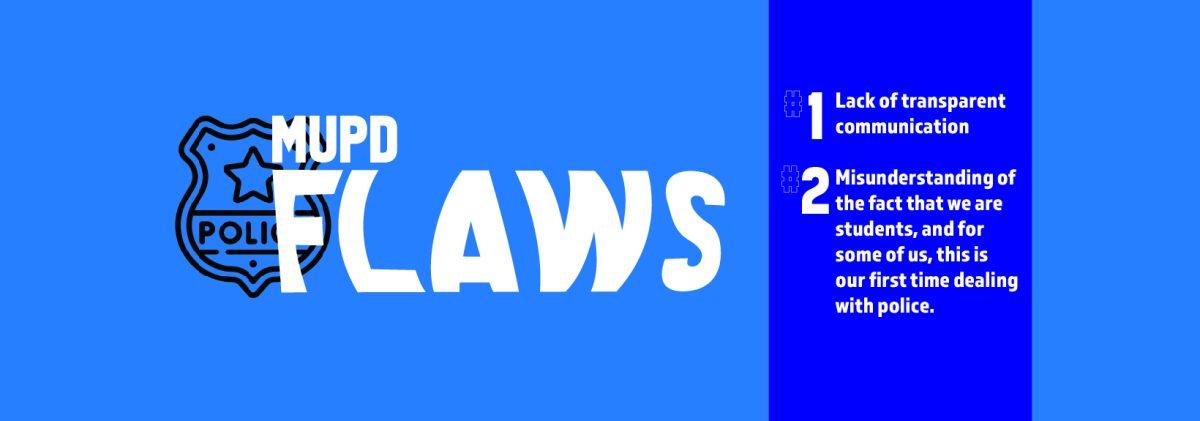I was one of many professors teaching on Oct. 19 when a strange alarm sounded down the hall and MU Alert took over my classroom computer. The message unhelpfully read: “MU Alert reports an active threat near Hitt St/Locust St http://mualert.missouri.edu for confirmed details. Only call MUPD in an emergency.” I wasn’t sure what to do after reading that message. Hitt and Locust is about a 10 minute walk from my classroom, but I had none of the information I needed to make a decision about whether to evacuate the classroom, keep teaching or tell my students to shelter in place. Every time MU Alert is used it should describe the nature of the threat or recommend what recipients of the message should do to stay safe until more information is available.
One of my students, Caleb Dahlgren, has been trained to respond to active shooter threats. He responded to the “active threat” as a possible active shooter event. He closed the blinds, and, with my permission, dimmed the lights and had us make a plan to defend our classroom. I recognized that his response was heightening anxiety in the room, but I had not been trained to handle an active shooter, and I would rather we be prepared than take unnecessary risks while waiting for more information. I asked my students to monitor Twitter and the local news for me because I do not bring my phone to class. I wasn’t worried about any of us being shot, but as my students read new messages to me from the MU Alert Twitter account, I became concerned for the safety of the “subject” and for every African-American woman in a Mizzou sweatshirt who matched her description.
As with every MU Alert I have received so far, preparing for an active shooter event was the wrong choice. But sheltering in place was also the wrong decision. Our classroom door does not lock. The walls are not bulletproof and our interior wall is along the main corridor near the stairwell. A shooter could have sent several rounds through the wall before we saw anything or could move to defend ourselves. We were vulnerable to shrapnel and flying glass, a chemical attack, grenades or other explosives. If an armed person or group had been attacking campus, we should have evacuated to a more secure location.
MU Alert is a powerful tool, but, as The Maneater has recently reported, every message it sends is written and approved by humans. Last week, someone decided to warn campus about a threat but failed to provide the information we needed to know how to respond to that threat. In my opinion, their bigger mistake was deciding that the situation even merited a campus-wide alert. Missouri is an open-carry state and it is legal to have a gun at the intersection of Hitt and Locust. We should expect that guns will be seen on or near campus, especially since there are no posted signs prohibiting guns on University grounds.
What if the nuclear reactor malfunctions, or a hazardous spill or explosion takes place in a laboratory, or an armed group launches a coordinated attack on campus? What if there is an earthquake or a tornado or a wildfire? Or another sexual assault, a suicide, a robbery? What if our campus, like other universities, faces the murderous terror of a car driving through a crowd or a lone attacker bringing a knife or gun to our campus to kill as many as possible? It is a mistake to assume that events like these can’t happen here. Whatever the threat, we will need to know the nature of the threat to be able to respond correctly. Unfortunately, if MU Alert continues to be used like it was last week, no amount of training can keep us safe.












